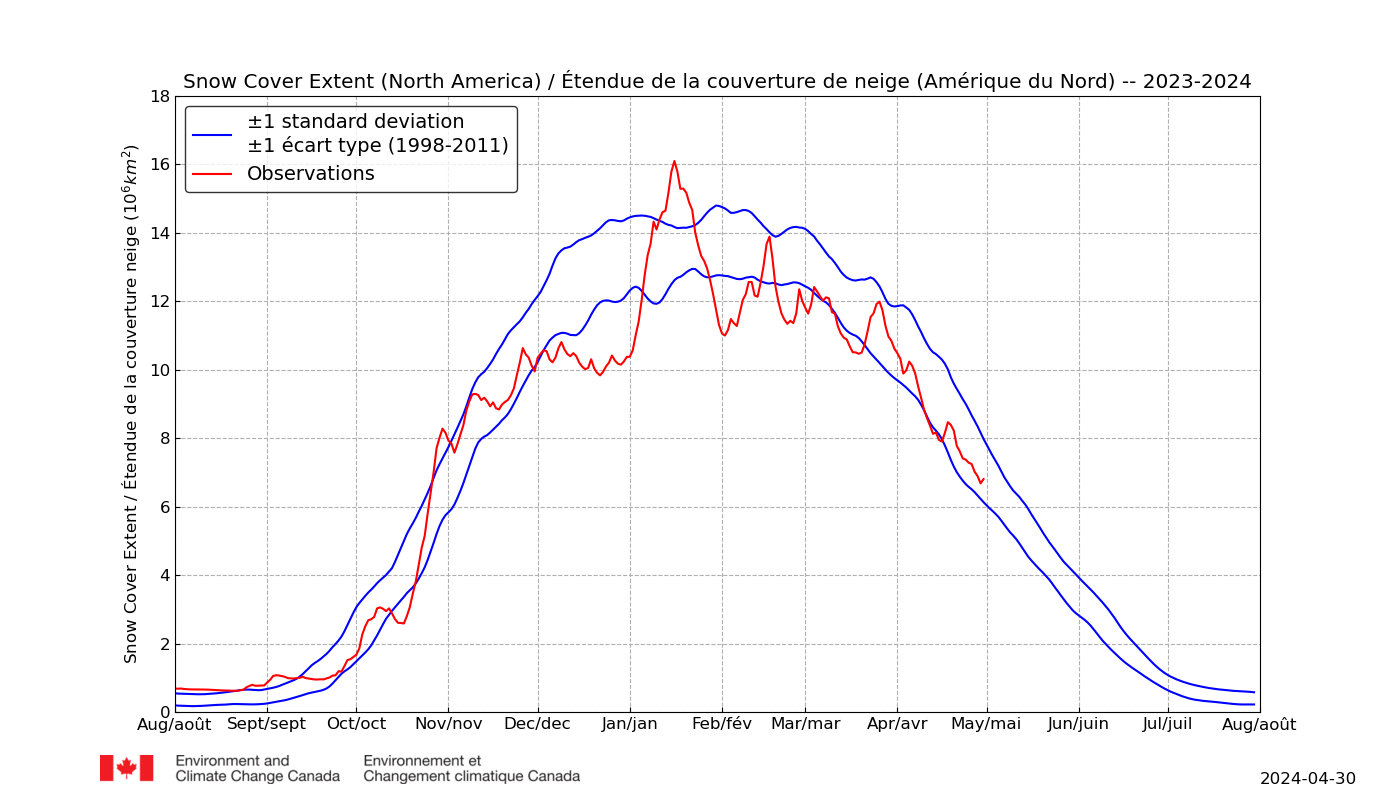As expected sea ice extent is rapidly returning to the normal of the past few years. The fresh water layer that forms from rivers flowing into the Arctic has had weeks of cooling and it is beginning to freeze up. The arm of sea ice that held out through the summer north of the ESS is rapidly gaining area. This ice arm is a near surface pathway for poleward fresh water flow. The freeze up pattern we are seeing now is what we should have expected.
The large area of +SSTs north of Siberia has also led to the major polar vortex being stuck in Greenland / CAA / North America, with the only snows over Asia contained to the Himalayas / Tibetan Plateau and Northeast Siberia. This has partially been responsible for the worsening +500MB anomalies over much of western Russia (no snow = low albedo, + adjacent warm SSTs nearby = WAY warmer vs. normal snow-covered values).
North America's extent is now above Eurasia's, and is quite likely to set an all-time October record. 6M KM^2 of continental extent on 10/12 does way more in terms of deflecting insolation than 5M KM^2 of sea ice wayyyy up north btw. I think this helps illustrates how, when oceanic heat accumulates to significant enough quantities AND large ice sheets remain extent, continental heat sinks become much more effective at resolving the planetary heat budget vs. oceanic ice caps.
While the see-saw of winter may temporarily be heavily favoring North America, I think Siberia will soon respond to all the open ocean with massive snowfall as well, so +500MB anoms are imminently likely to become much more focused over the Arctic proper vs. the distribution we have seen so far this October.
Final note: the least but perhaps most potent impact of the lack of snow in Western Siberia this autumn has been way less melt / way warmer temps / *no* coastal refreeze! Refreeze was well underway at all other points in history. The delayed coastal refreeze in Siberia and FRAM transport of the remaining sea ice could result in a springtime Laptev situation that mirrors what unfolded this year in Bering (which will also repeat the same in 2019). The refreeze season this year in Laptev will, IMO, be curtailed worse than any prior year.

...and PPS: I also just realized this may be the first point in autumnal history that North American snowcover has equaled / surpassed Eurasian. The difference to date this fall has been very dramatic.
The discrepancy can only get so bad as North America's smaller landmass means it runs out of area to cover quicker, however, with SWE building so early over such a wide area, 2018-2019 looks to be gunning for springtime North America volume numbers that are perhaps substantially even more impressive than 2017-2018 (which saw nothing like what has unfolded in Sept / Oct 2018 in the lead-up to record Mar / Apr / May #s).

